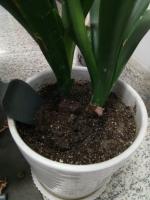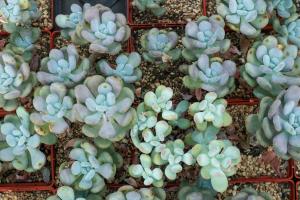Can You Plant Anything Under a Black Walnut Tree?
Many gardeners are stumped when faced with the question of what to plant under a black walnut tree. This is because black walnut trees are unique in their production of a chemical called juglone, which can be toxic to certain plants. However, with some careful planning and selection of appropriate plant species, it is possible to create a beautiful garden under a black walnut tree.
Understanding Juglone
Juglone is a chemical compound produced by the black walnut tree that can inhibit the growth of some plants. The highest concentration of juglone is found in the tree's fruit, nuts, and leaves, with smaller amounts present in the tree's roots. The toxicity of juglone comes from its ability to disrupt a plant's cellular respiration, leading to wilting, yellowing, and death in susceptible species.
What Not to Plant
When it comes to planting under a black walnut tree, it is important to avoid species that are known to be sensitive to juglone. These include many common garden plants such as tomatoes, peppers, potatoes, blueberries, and rhododendrons. Other plants that are known to be sensitive to juglone include apple trees, birch trees, and most species of conifers. Avoiding these species can help to prevent damage to your plants.
What to Plant
Despite the challenges posed by juglone, there are still many species of plants that can thrive under a black walnut tree. These include many native woodland species such as ferns, asters, goldenrod, bloodroot, and mayapple. Additionally, many species of shade-tolerant perennials such as hostas, lungwort, and foamflower can also do well under a black walnut tree. It is important to select species that are adapted to the growing conditions of your site, including soil type, moisture level, and level of natural light.
Preparing the Soil
If you plan to plant under a black walnut tree, it is important to understand the soil conditions that are favorable for your chosen species. For most plants, it is best to avoid planting directly beneath the tree's canopy, as the soil here is often depleted of nutrients and may be compacted. Instead, look for areas on the edge of the canopy or beyond where the soil is more fertile and has better drainage. Amending the soil with organic matter such as compost or leaf mulch can also help to improve its fertility and water-holding capacity.
Conclusion
Planting under a black walnut tree can be a challenge, but with some careful planning and selection of appropriate species, it is possible to create a beautiful and diverse garden. Understanding the effects of juglone on plant growth, avoiding sensitive species, and selecting shade-tolerant perennials and woodland natives are key strategies for success. With the right plan and some patience, you can create a stunning garden under your black walnut tree.

 how many times do yo...
how many times do yo... how many planted tre...
how many planted tre... how many pine trees ...
how many pine trees ... how many pecan trees...
how many pecan trees... how many plants comp...
how many plants comp... how many plants can ...
how many plants can ... how many plants and ...
how many plants and ... how many pepper plan...
how many pepper plan...
































